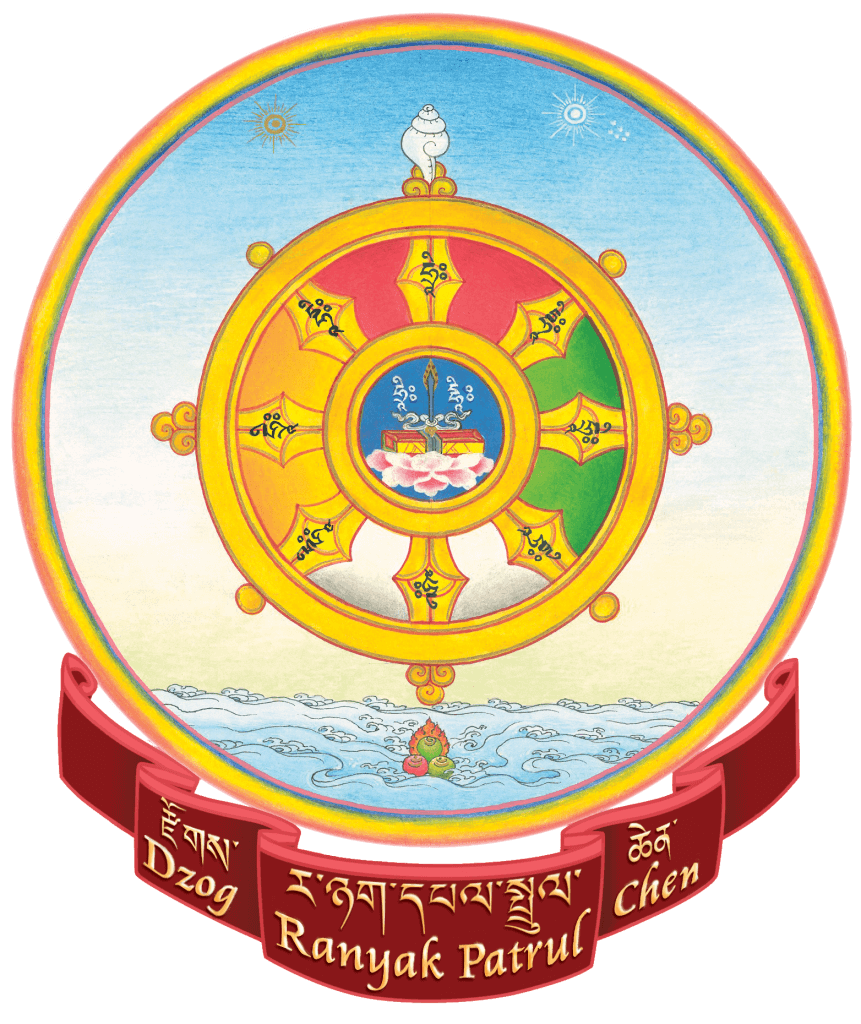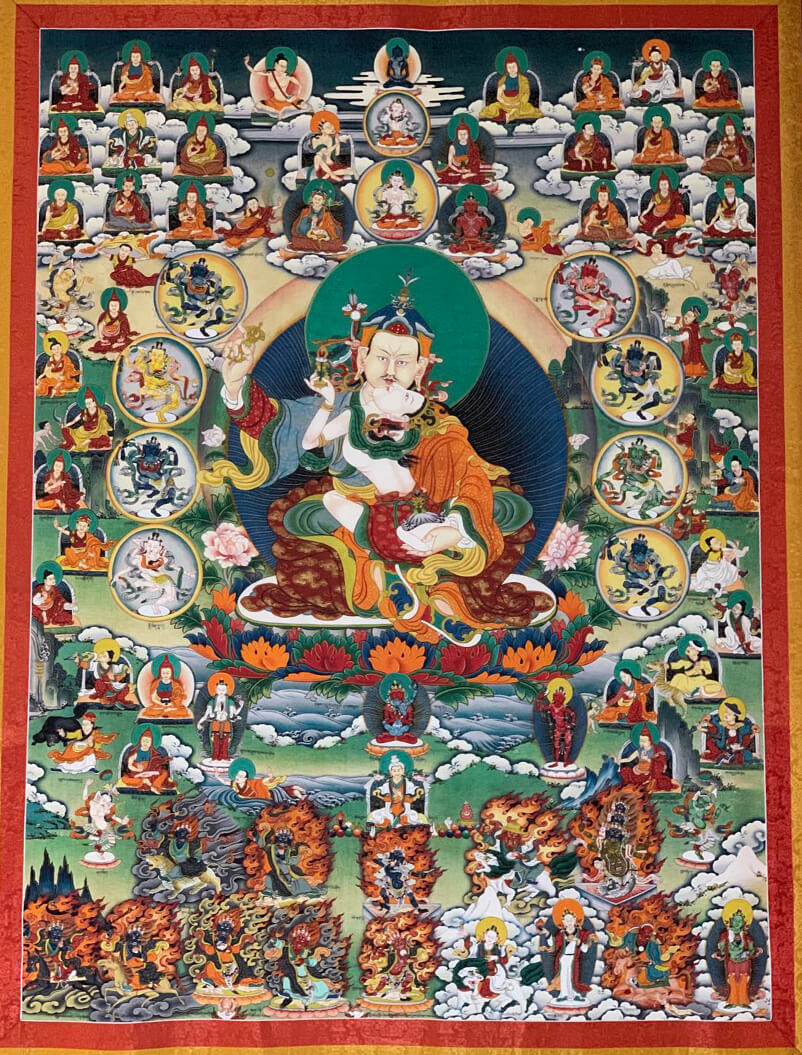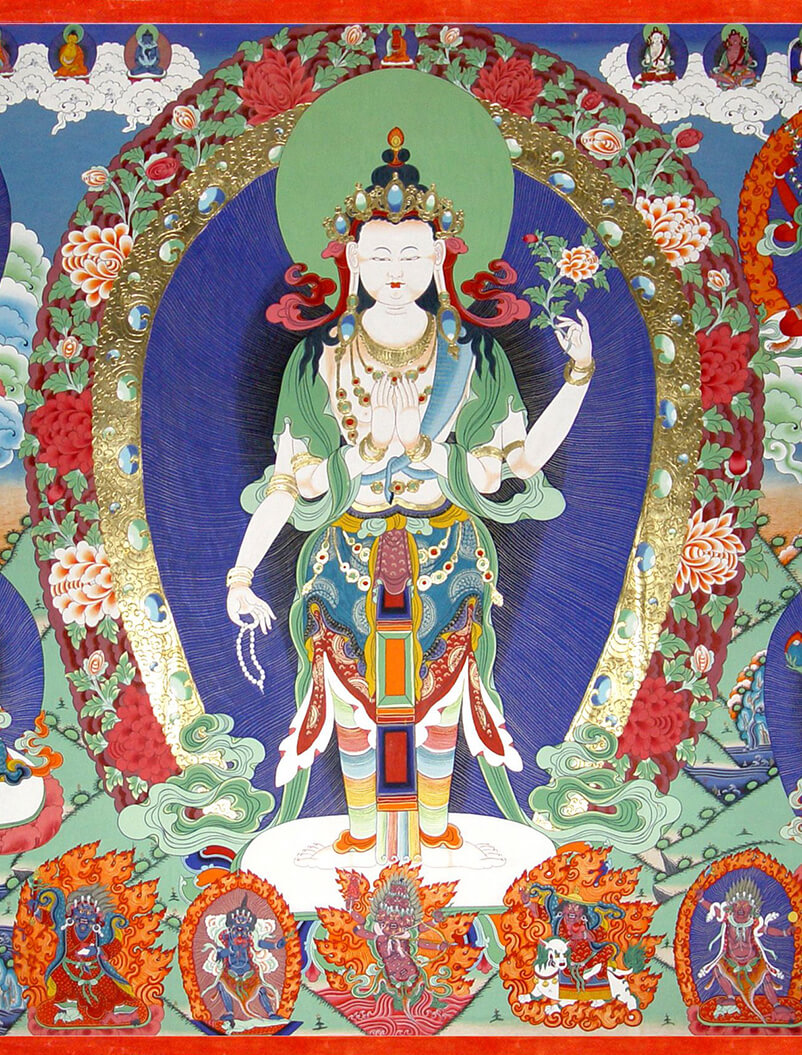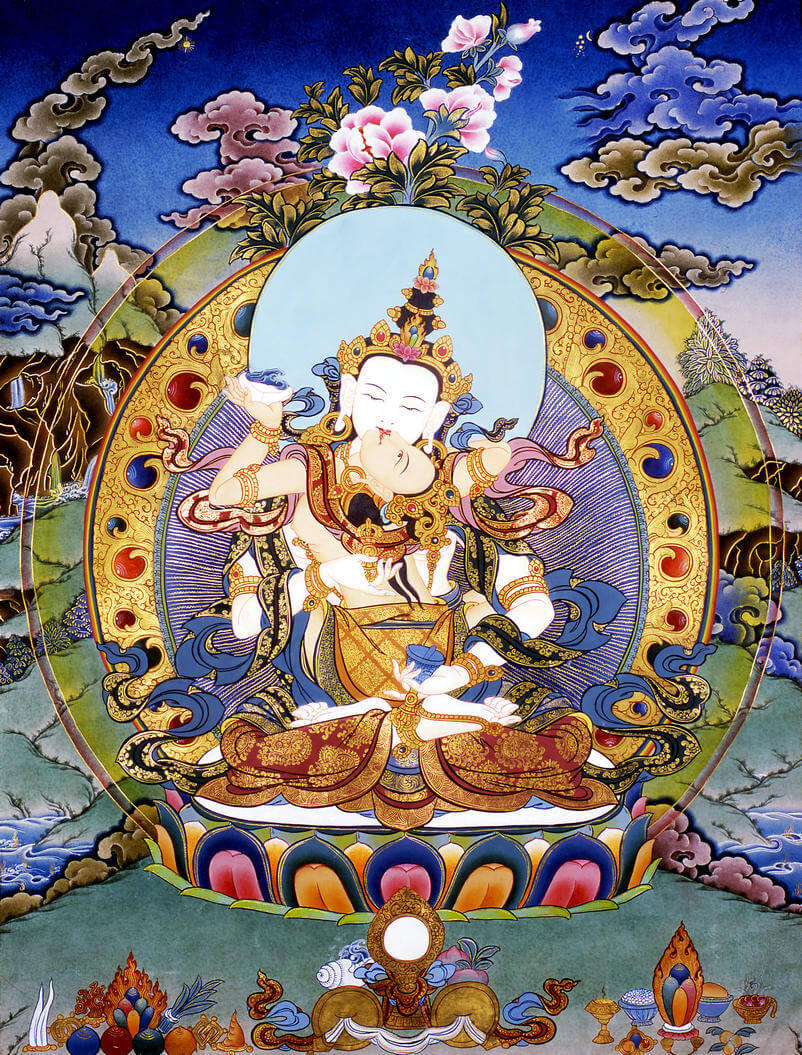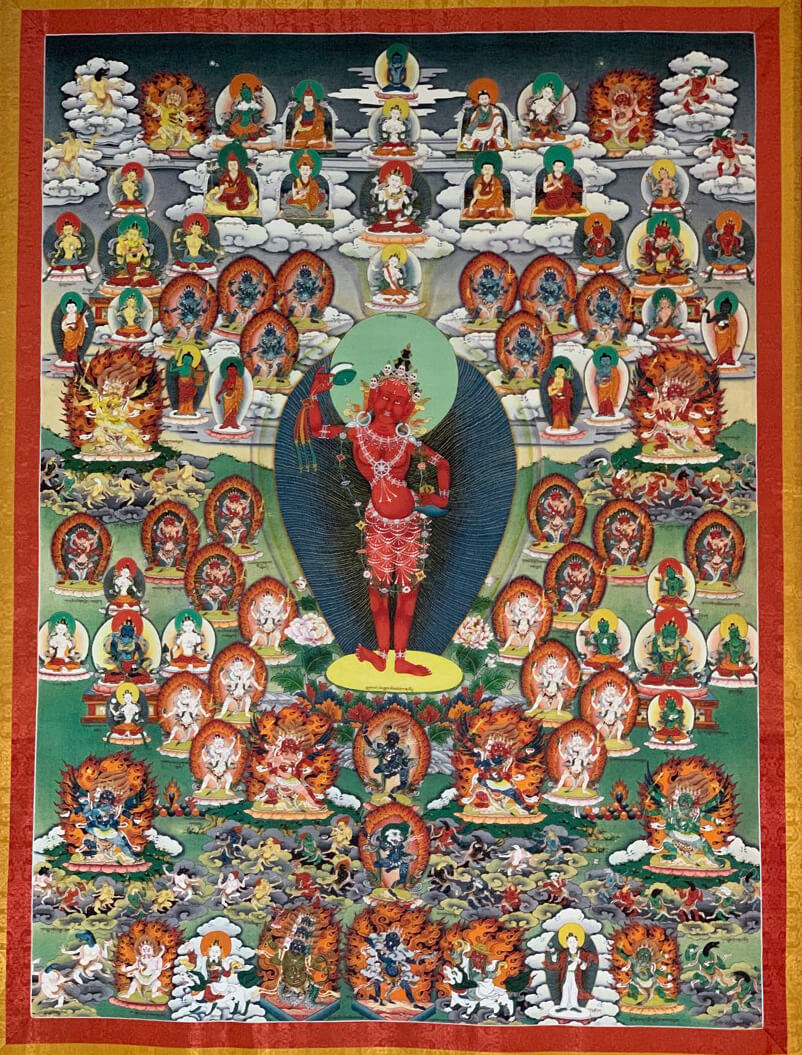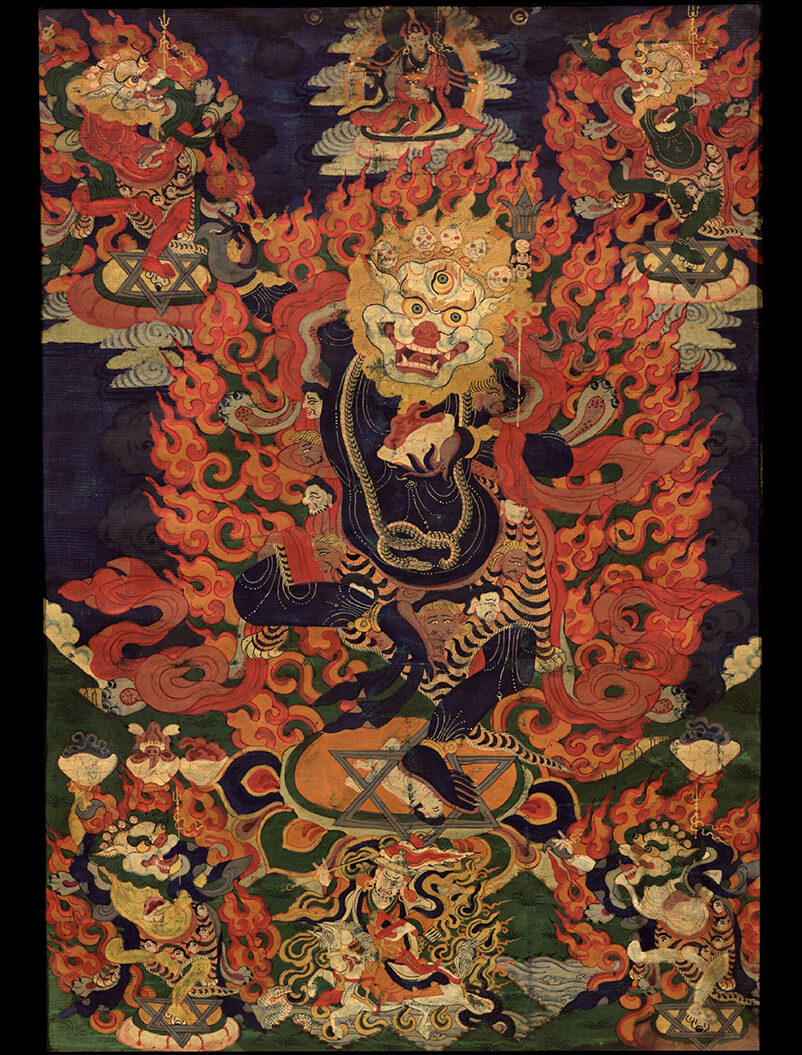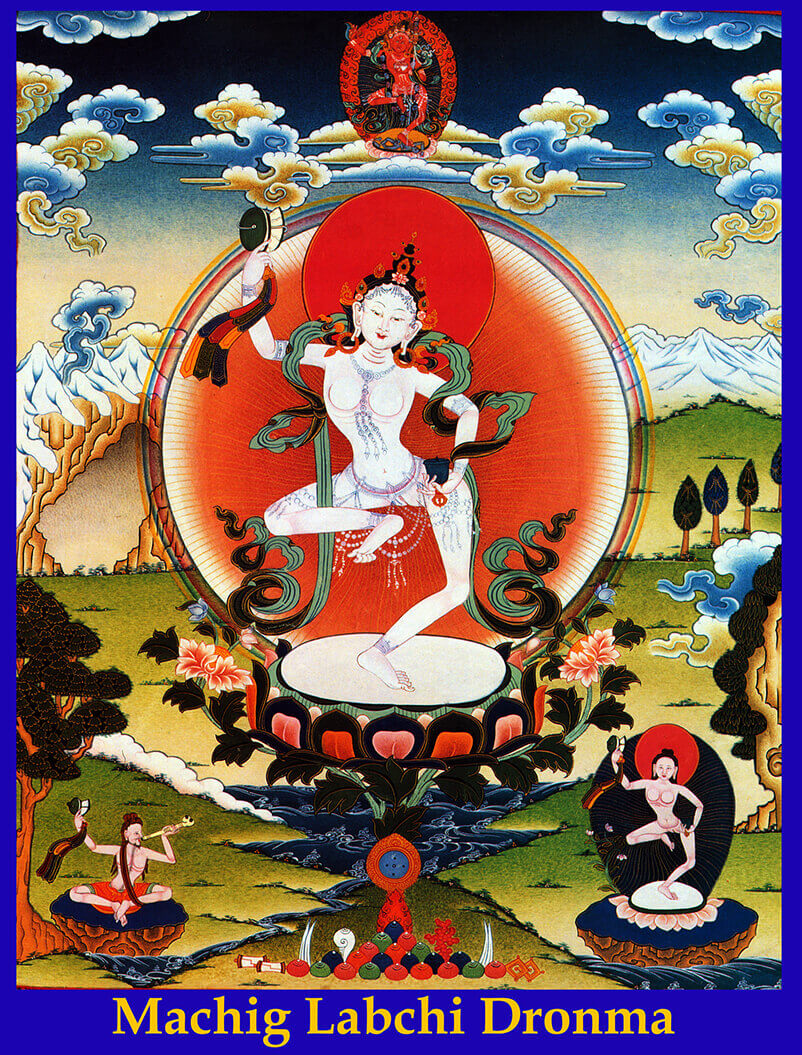DRUPCHEN
Great Accomplishment
The meaning of drupchen is to purify or tame our body,
speech and mind in order to become authentic and beneficial.
Dzogchen Ranyak Patrul Rinpoche
A Drupchen is an intensive group practice of one sadhana for at least seven days. It is a special time, totally devoted to practice, where body, speech and mind should be fully occupied. The idea is to practice for 24 hours; therefore, there are four practice sessions of the liturgy and a non-interrupted recitation of the mantra done in groups. Our Drupchen retreats are usually led by Ranyak Patrul Rinpoche (Vajra Master) with the assistance of Lopön Tsering Gönpo (Vajra Assistant).
What is the point?
The point is to purify the body and mind, as well as the environment. That is the power the practice really has. “It is the way to approach the natural peace”, as Patrul Rinpoche said. It has the power of practice of a 3-years retreat.
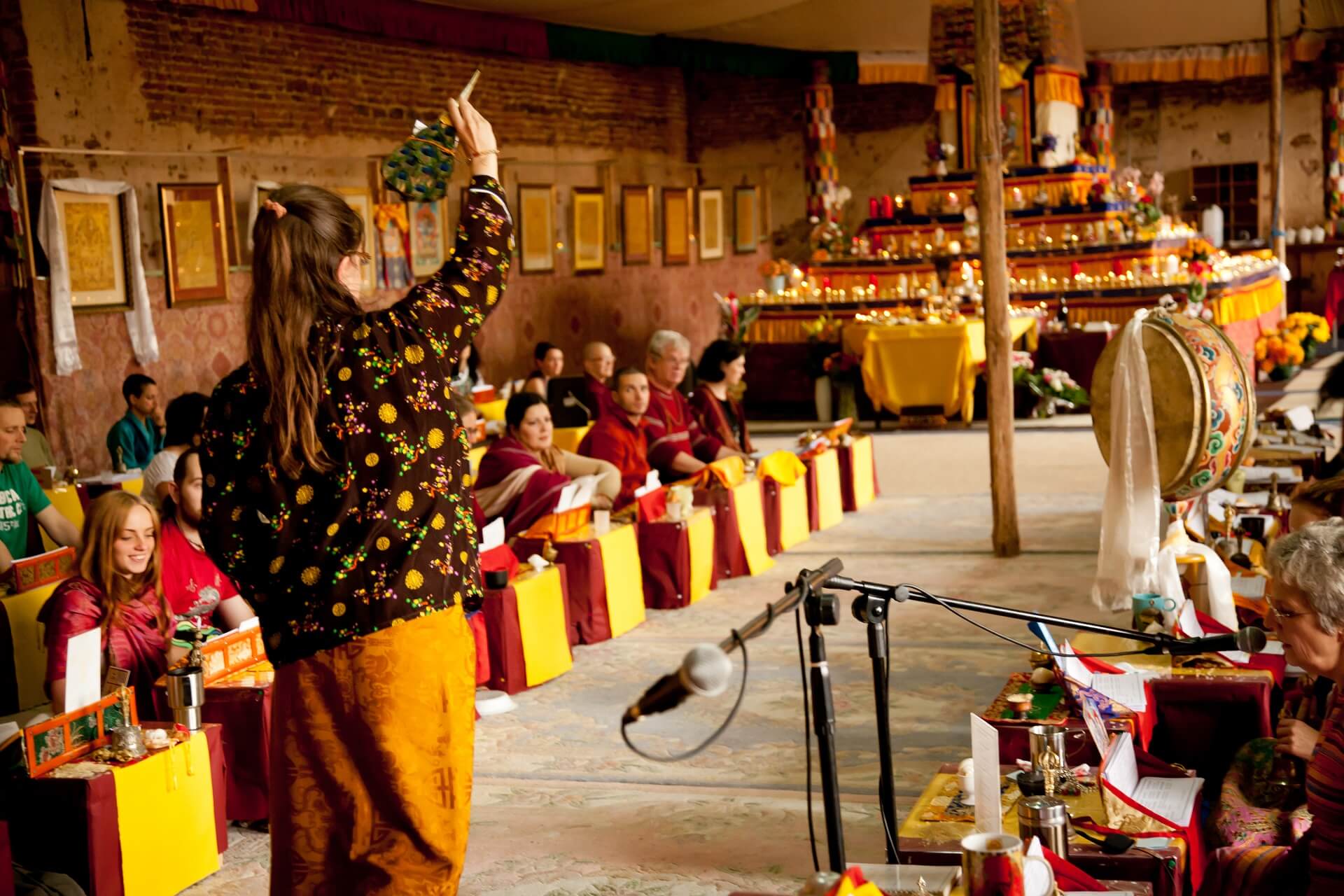
It aims at taming our mind by the skilful means of the Vajrayana. You need to strain yourself to recite for hours, wake up at different hours to do the recitation at appointed time, prepare the mandala and fully dedicate your attention to the visualisation of the particular sadhana. Sounds like a torture but offers a better feeling than a holiday in Hawaii… It lets you forget all the world you left behind and enter a new reality of the pure visualisation of the sadhana. The pure vision can be created, experienced and stabilised with time.
That allows the mind to challenge, and especially to change its habitual patterns that had been cherished so much through many lifetimes. That is the skilful way of Vajrayana of turning things around in our perception.
As we have not found the way out to happiness for so many lives so far, we need serious help. Such help are drupchens. Invented and planned by enlightened beings, they are taught and practiced also here in Europe.
Will I manage?
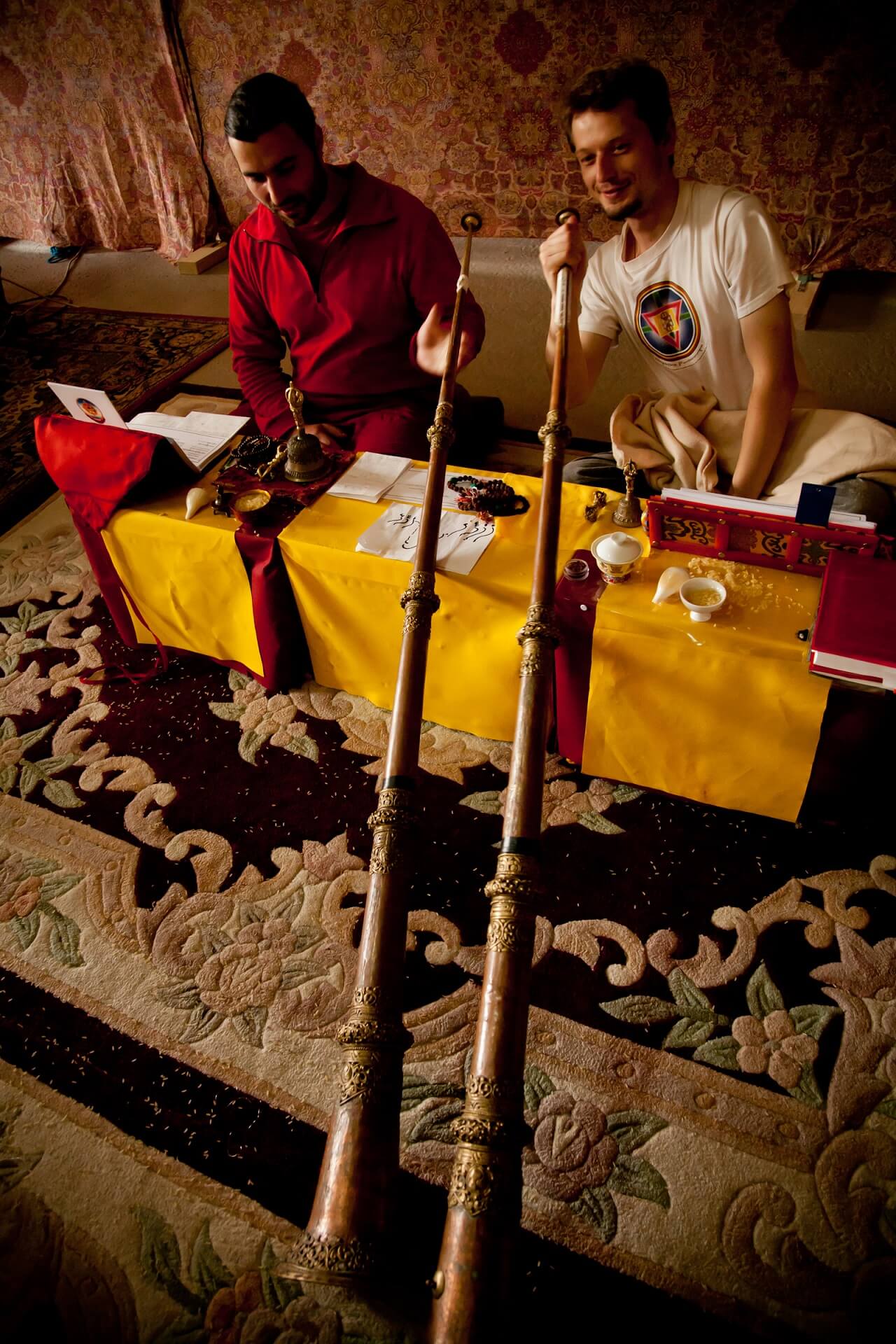
Patrul Rinpoche was the first lama who organised a real drupchen performed by Westerners, in Europe. Before that, all Buddhist centres had invited monks from India or Tibet who had performed the rituals and Westerners could have joined.
But our Rinpoche decided to teach his students everything! He started from scratch – real scratch. He instructed about the mandala and the ritual, and he just went for it with the people who joined him at that time. It worked! Since that time there has been a 3-day preparation course before every drupchen.
During this course you can learn about the order of prayers that are recited during different days, about the mandala, mudras, music instruments, offerings and so on. You can learn everything here and train your mind under the guidelines of a qualified teacher.

Great Accomplishment Practices
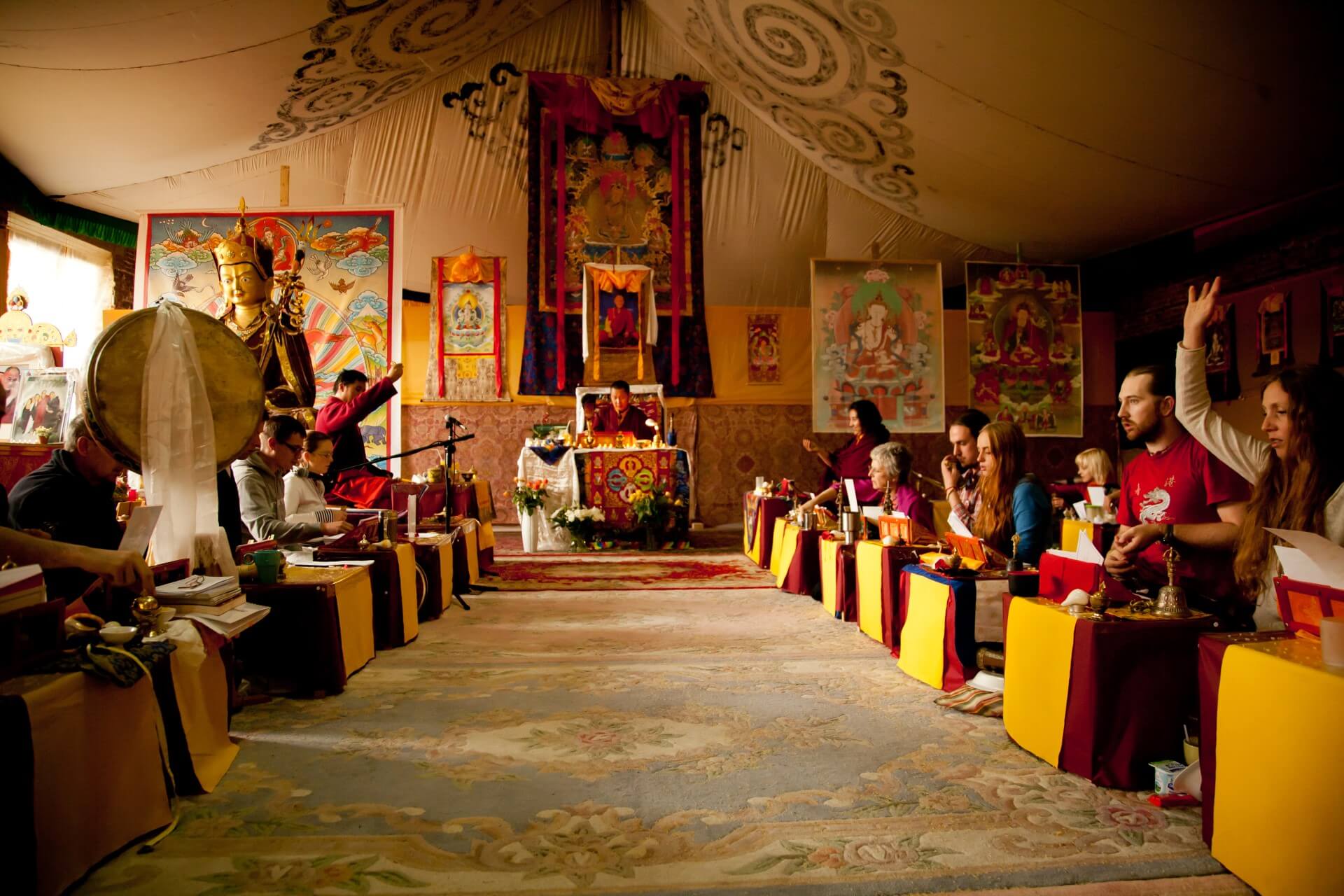
A drupchen, ‘great accomplishment’ in Tibetan, is an intensive group practice that draws upon all the skilful methods of the Vajrayana teachings to tame or purify our body, speech and mind, in order to become authentic and beneficial beings. Drupchens are also called Peace Prayers in Tibetan. Engaging in them gives us the opportunity to create a cause for future well-being and happiness, for ourselves as well as everyone around us and indirectly all beings.
READ MORE
Dzogchen Ranyak Patrul Rinpoche learned all aspects of the sadhana practices in Dzogchen Monastery (Eastern Tibet). He was ‘Chöchen’ (Great Ritual Servant) for many years, overseeing all the ritual activities and their preparations. In addition to his manifest qualities and realisation, this profound knowledge of all aspects of the ritual makes Rinpoche an exceptional Vajra Master. Moreover, Rinpoche and Lopön Tsering Gönpo studied in the same monastery and are both wonderful ‘umzes’ (chant leaders).
Since 2008, Patrul Rinpoche has been leading one to three drupchens a year, and six drupchens in 2019:
• Rigdzin Düpa • Dugngal Rangdrol • Vajrasattva • Yumka Dechen Gyalmo • Singha Mukha • Chöd
The meaning of ‘drupchen’ explained by Patrul Rinpoche
The meaning of ‘drupchen’ explained by Patrul Rinpoche
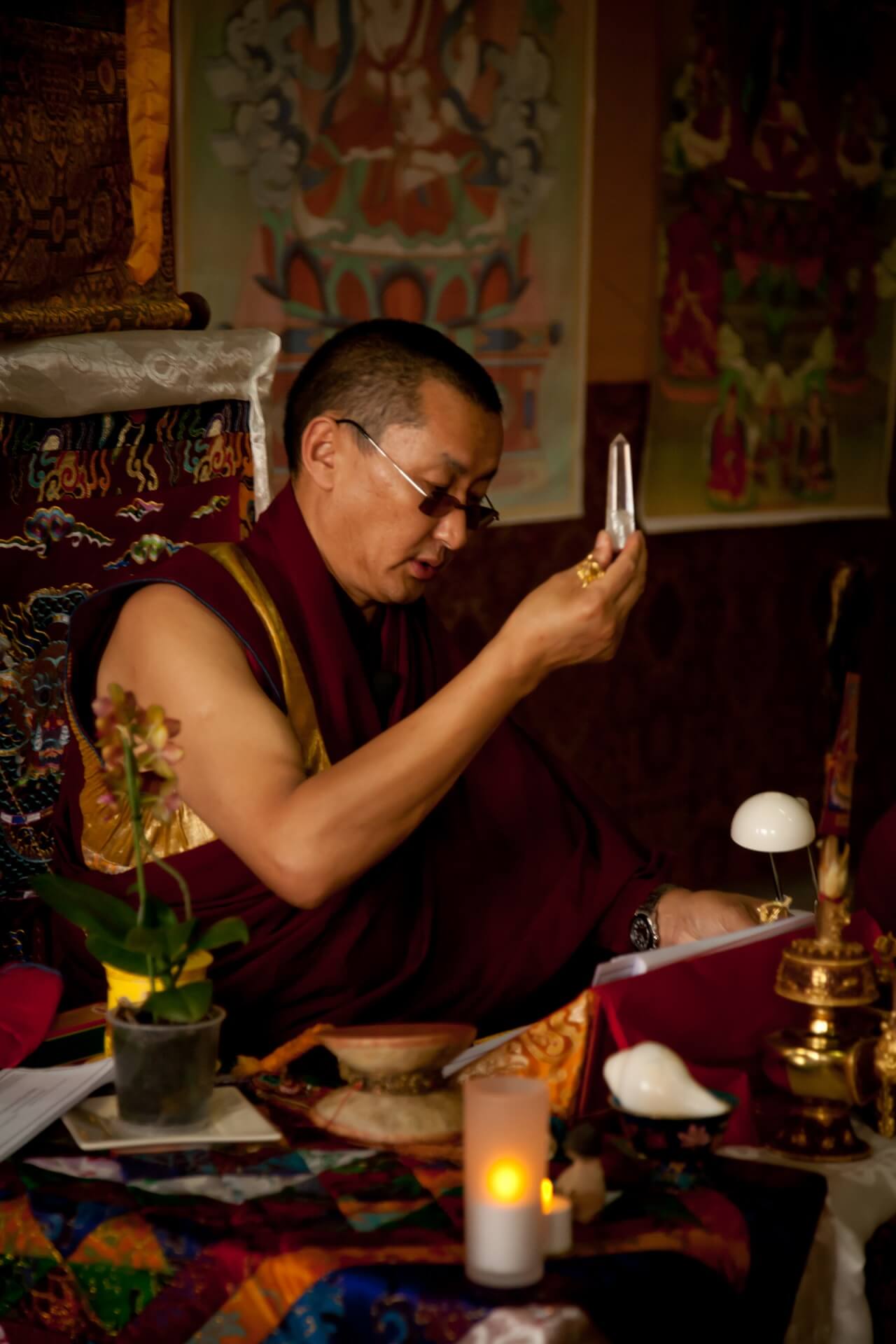
Ranyak Patrul Rinpoche explains:
“The meaning of the drupchen sadhana is to pray for all sentient beings, wishing them to be free from all the complications of suffering, which are the unfavourable circumstances in this life and individual problems in daily life. For example, sickness, conflicts in the family, difficulties in order to get what we wish for and difficulties in order to avoid what we do not wish.”
READ MORE
If we are honest with ourselves in order to investigate suffering and happiness, we will understand that suffering and happiness never come without causes and conditions, therefore we are discovering the causes of happiness and suffering. They come from the positive movement and negative movements of body, speech and mind. That is why we make drupchens.
From the perspective of the Buddha’s teaching, all the different appearances, whether pleasant or unpleasant, come from our own habitual patterns. These appearances, whether truly existent or not, permanent or non-permanent, good or bad, beautiful or ugly, disastrous or non-disastrous, depend entirely on our own mind. Therefore, if in our mind we have habitual patterns of positive perception or habitual patterns of negative perception, through these two habitual patterns of perceptions we project samsara and nirvana. When we are watching a samsaric film, it is unpleasant, because a lot of unbearable suffering happens. In the same way, when we are watching nirvana films, a lot of magnificent happy situations occur there. How can we develop our happy situations more? How can we purify sufferings? We think it is possible only through our mind. That is the reason why we are making a drupchen.
Whoever reads very carefully any sadhana text and what is described there, can comprehend that each sadhana is related to the highest tantric teachings of the Buddha connected to the teaching of the generation and completion stages.
The generation stage is connected to samsara in order to purify it. It is also connected to nirvana in order to develop it. Also, it is connected to the universal single ground of samsara and nirvana. It can lead to the realisation of that. As for the completion stage, it is also connected to both samsara and nirvana and can purify the dualistic labelling between good and bad, which is gathering and separation. It can lead to freedom from the dualistic suffering of gathering and separation.
Therefore, whoever connects to this kind of sadhana can perceive a lot of benefit. Whoever practices correctly this kind of sadhana, we appreciate your practice and rejoice very much.
If you cannot participate in our drupchen this time, please practice in this way yourself or join any other drupchen happening in this world.”
Discover more articles by Rinpoche:

The Fifth Day: wondrous accomplishments
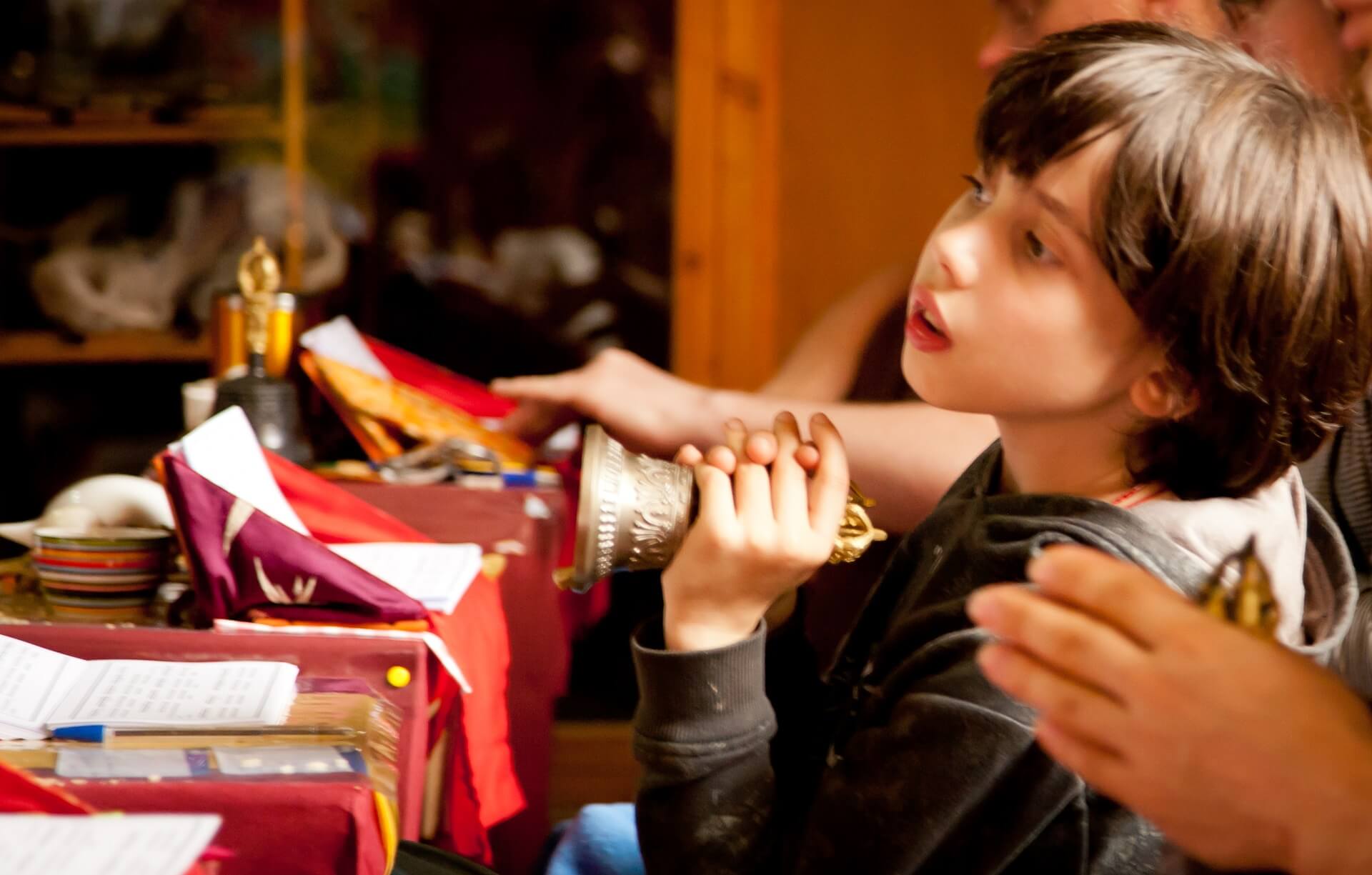
A drupchen, ‘great accomplishment’ in Tibetan, is an intensive group practice that draws upon all the skilful methods of the Vajrayana teachings to tame or purify our body, speech and mind, in order to become authentic and beneficial beings. Drupchens are also called Peace Prayers in Tibetan. Engaging in them gives us the opportunity to create a cause for future well-being and happiness, for ourselves as well as everyone around us and indirectly all beings.
READ MORE
Rinpoche said further: “This amrita starts on the fifth day of the drupchen. It is amazing and before I saw it myself it was difficult to believe. Later, I myself became chöpön, and for 6 years I made the tormas with tsampa and butter. During the drupchen I was very curious how amrita could be coming from the tormas. On the fifth day my root teacher came around the mandala and said, “How is it going with the tormas?” He said that since the time of the Fourth Dzogchen Rinpoche, amrita had been coming from the tormas, adding that he was not sure if it would happen if he himself had not been a special master. On the fifth day we made a special tsok offering, and after the invocation, everyone felt relaxed. In the evening amrita started coming out from all sides of the torma, first from the torma of Guru Rinpoche and then from all the tormas. I collected a lot of amrita.”
The first drupchen of Rigdzin Düpa in Dharma City also showed signs of blessings. Rinpoche said:
“I offered this kind of tradition to you, and due to the power of students’ wishes, magnificent signs appeared. Rainbows appeared throughout the drupchen and on the fifth day (bumdrup) the statue of Guru Rinpoche arrived without prior arrangement to arrive on that day.
Also, since I arrived in Europe more than 10 years ago, we have tried to publish a book but it never happened. We also wanted to have this book ready before the drupchen, but it was impossible, there were always different circumstances. Finally, it came out and was delivered on the fifth day of the drupchen.”
Preparation course

Drupchens organised by Zangdok Palri Institute usually last for seven days and are preceded by three to five days of study and preparation to learn the different aspects of the practice such as the order of the prayers, the mudras and the chanting tunes.
READ MORE
Ranyak Patrul Rinpoche learned all aspects of the sadhana practices in Dzogchen Monastery (Tibet), where he was ‘Chöchen’ (Great Ritual Servant) for many years. In 2008 he was the first who enabled Westerners to perform all drupchen activities by themselves, under his precious guidance. Together with Lopön Tsering Gönpo—who, like Rinpoche, is an outstanding chant leader—they started to teach the mudras, the chanting tunes and all ritual activities. Nowadays the senior students have the skills to guide the newcomers, but Rinpoche is still present during the preparatory course and gives his invaluable advice.
During the preparation course, the students are divided into two groups. Those who want to train instruments and chanting join the “Umze team”, while those who wish to learn everything about ritual service join the “Chopön team”. Generally, newcomers are encouraged to join the Umze team in order to learn the fundamental aspects of the sadhana that all participants are performing: the mudras and the chanting tunes.
Here is what you can learn during the preparatory course:
UMZE TEAM:
- Mudras: different graceful hand gestures with a symbolic meaning, performed at specific moments.
- Melodies: there are different tunes that are useful to know in order to follow the chant leader (umze).
- Umze: those who are already acquainted with the sadhana can learn how to be a chant leader.
- Instruments: many traditional instruments are involved in the ritual: bells, rolmo cymbals, silnyen cymbals, a drum, radongs (very long horns), kangling trumpets, gyaling clarinets, and conchs.
CHOPÖN TEAM:
- Setting up the altar (or mandala): how to arrange the different types of offerings and sacred objects.
- Tsok: the tsok feast is an important part of the drupchen sadhana. Tsok involves a large offering of food and drink, the preparation of which is carried out by the chopön team.
- Tormas: ritual sculptures made of flour and butter and decorated with colors and ornaments. Tormas can represent deities, protectors, food, weapons and so on. Some of them are offered during the ritual, while others stay on the altar for the whole duration of the drupchen.
- Chopön: the chopön is the ritual servant who will perform all kinds of activities on behalf of the Vajra Master. There is a main chopön, an assistant chopön and sometimes several assistants.

I’d like to join, but I have no time…
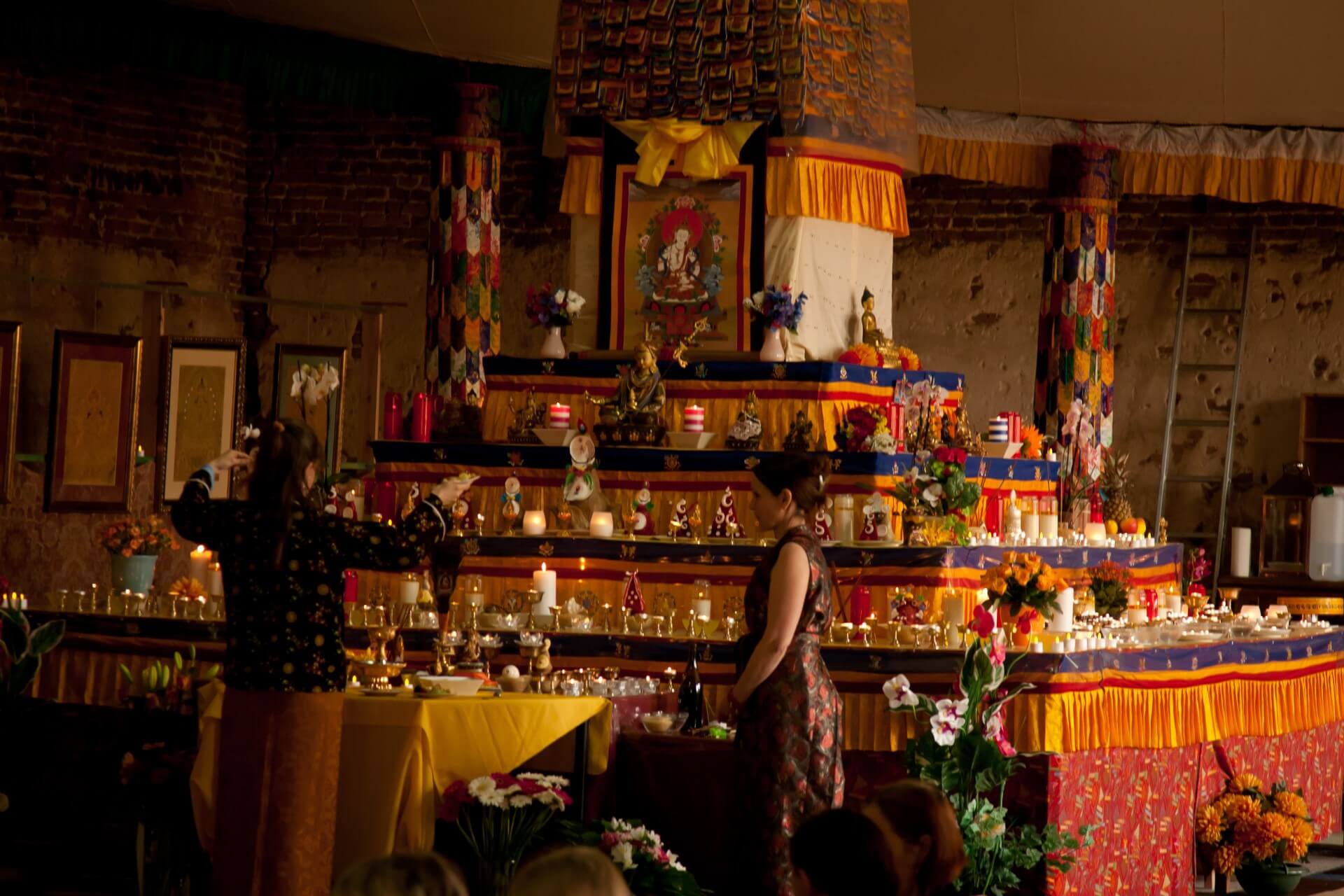
We understand that some people live too far away or cannot come due to some circumstances. If you cannot come to the drupchen for some reason, but still wish to be a part of the mandala, there is a perfect way to share all the benefits of the Sangha, by supporting it materially. Drupchen has a powerful meaning as we make two types of accumulation: accumulation of merit and accumulation of wisdom. It is also the perfect way to purify any possible obstacles. During a drupchen a lot of Sangha members come together, pray together; using all occasions to make each action beneficial and accumulate merit in various ways—that makes this occasion particularly special and auspicious. That is why all actions of generosity in this particular time bring a lot of good causes in the life of the supporter.
READ MORE
As Jetsun Mila said:
Between the hermit meditating in the mountains
And the donor who provides his sustenance
There is a link that will lead them to enlightenment together.
Dedication of merit is the very heart of that link.
As Dza Patrul Rinpoche also said:
“We believe that the positive movements of body, speech and mind will bring benefit to all beings, especially to those who participate in a drupchen or have some connection to it. They can receive lot of benefit, because positive and negative results come from positive and negative movements, of our body, speech and mind. Therefore, a drupchen does not relate to a religious ceremony, it does not relate to worldly business, it relates to the positive action of compassion and wisdom in order to develop positive aspects of body, speech and mind. This positive action is the gathering of all members of the Sangha together in order to pray for world peace without war, hunger, thirst and disasters.”
What kind of accumulation is possible during the drupchen?
There are many ways to do accumulations during the drupchen.
Every day we
- prepare the mandala
- make new tormas
- offer fresh flowers
- offer candles
- make tsok offerings
- offer tea, soft drinks, fruit, cakes, bread, cheese, sugar and other food to the
- reciters of the mantras (during the recitation period some people become thirsty, hungry, tired, so we support them in this way)
- recite many mantras for the benefit of all sentient beings
- dedicate all our merit
How to support?
If you wish, you can make a donation for a particular purpose or in general. Every support is appreciated.
To donate, please visit this page. It is useful for us if you specify your name, purpose and donation amount by email.
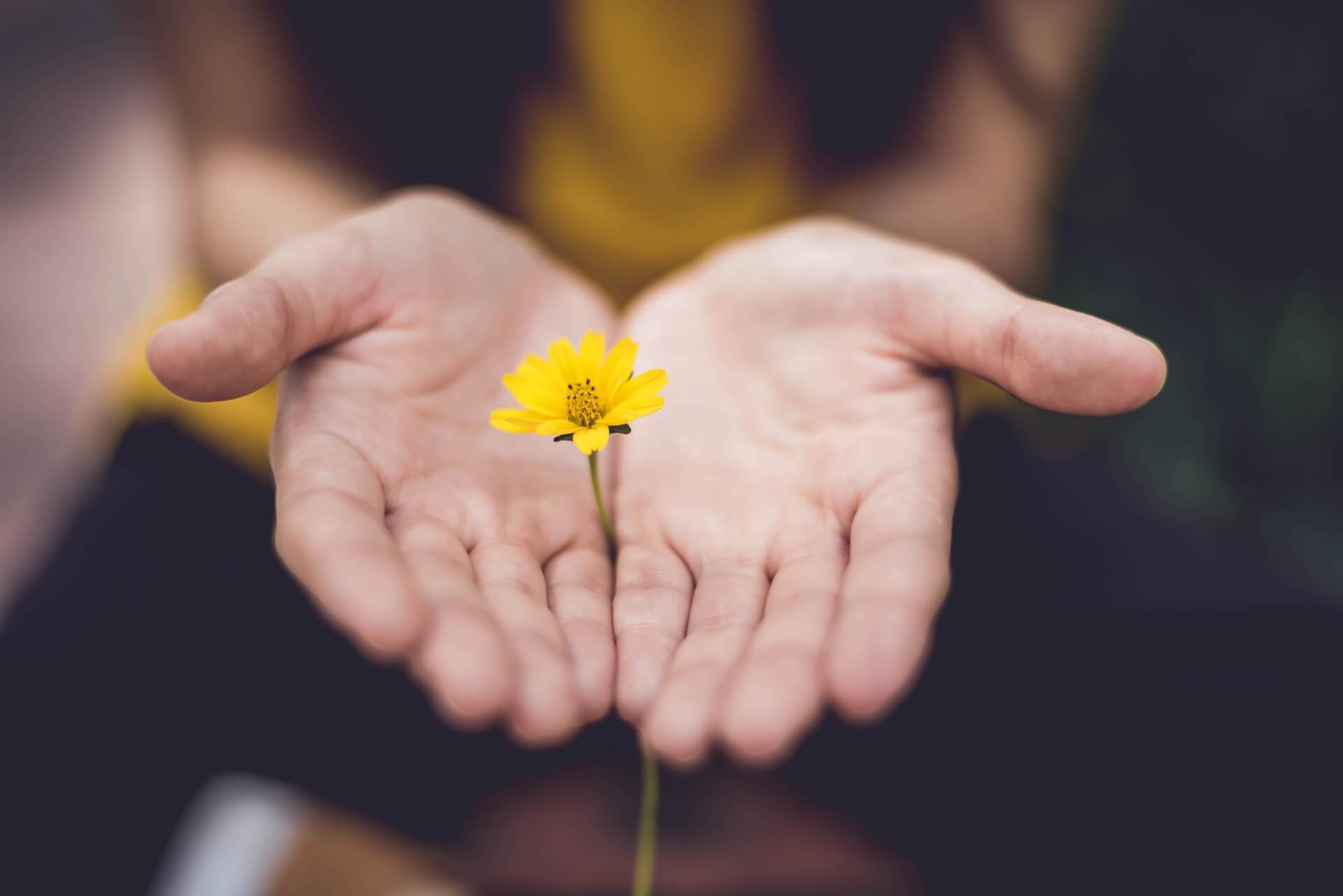
Drupchen Foundation
We are delighted to announce the creation of a foundation to make the “Drupchen” retreats free of charge.
During these intensive retreats, prayers for peace and happiness are recited continuously and this is incredibly powerful. When many individuals come together, the power of their wholesome aspirations multiplies exponentially.
To support use the bank details:
IBAN: BE50 0682 2863 7818
SWIFT: GKCCBEBB
BENEFICIARY: Dzogchen Gelek Palbar Ling ASBL
COMMUNICATION: Drupchen Foudation + <your name>
